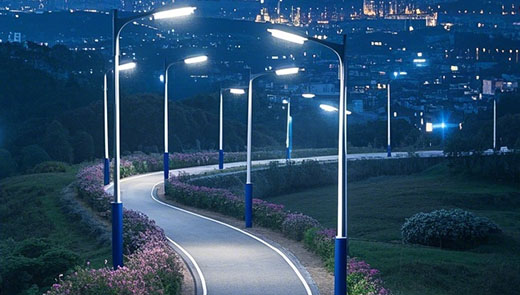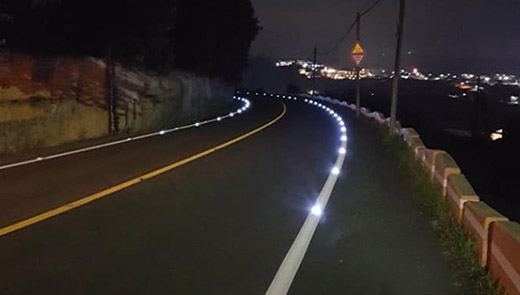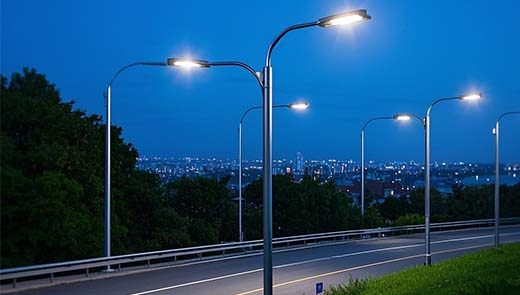Wattage vs Lumens: Better Understanding Light Brightness
Lighting is a ubiquitous part of our daily lives, from the warmth of our homes to the street lights that illuminate our city streets. However, when it comes to choosing the right lighting, many people are often confused by two key terms: watts and lumens. These two concepts not only affect our perception of light brightness, but are also closely related to energy consumption and cost. Especially in large-scale lighting scenarios such as solar street lights, it's critical to properly understand the difference between them. Next, let's dive into the world of watts and lumens.
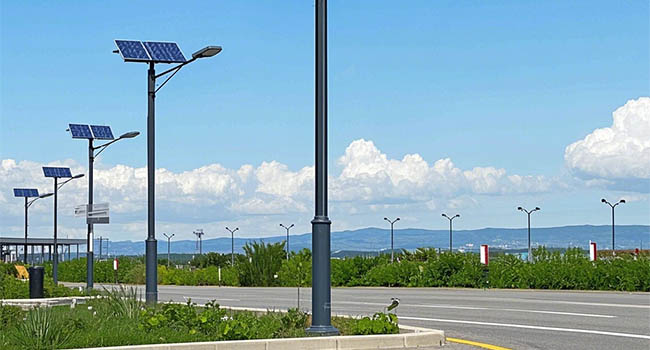
What are lumens?
A lumen, simply put, is a unit that measures the amount of visible light emitted by a light source. It directly reflects the brightness of the light. Think of lumens as a ruler that measures the “amount”of light. Higher lumens mean more visible light is emitted, and the brighter the light is. For example, when choosing a light bulb for your home, if you want a light source that will brighten a room, you need to focus on its lumen value. An average bedroom may need a bulb with 800-1500 lumens to provide comfortable lighting, while a kitchen may need a higher brightness of 1500-3000 lumens due to operational needs.
What are watts?
A watt is a unit of measurement of energy consumption. The electricity bill we pay each month is actually based on the number of watts used. At one time, we used 60-watt incandescent light bulbs for a long time, and over time, we came to associate 60 watts with a certain level of brightness. But that has changed with advances in technology, particularly the rise of LED, which are capable of producing much brighter light than incandescent bulbs while consuming fewer watts. This means that it is no longer accurate to rely solely on wattage to determine the brightness of a light.
What is the difference between lumens and watts?
Different concepts
Wattage measures the electrical power consumed by a light bulb, that is, the amount of electricity it consumes per unit of time. Lumens, on the other hand, measure the intensity of visible light emitted by a light source, i.e. how bright we can actually see the light. It can be said that watts are concerned with the input of energy, while lumens are concerned with the output of light. In the analogy of an automobile, watts are like the amount of fuel consumed by the engine of a car, while lumens are like how brightly the headlights of a car illuminate the road in front of it. A car with a large displacement engine may consume a lot of fuel (high wattage), but the headlights are not necessarily bright (low lumens); conversely, some energy-efficient cars consume less fuel (low wattage), but are equipped with bright headlights (high lumens).
Common misconceptions
In the past, it was widely believed that the higher the wattage of a light bulb, the brighter it would be. But the advent of LED lights has shattered this perception. For example, a traditional 60-watt incandescent bulb is about 800 lumens; now, an LED bulb of only about 10 watts can easily reach or exceed 800 lumens. In office lighting, 40-watt fluorescent tubes were used in the past, with a brightness of 3,000-4,000 lumens. Nowadays, with LED tubes of about 15 watts, the brightness can be increased to 4000-5000 lumens, which not only provides better illumination, but also significantly reduces energy consumption. This shows that high wattage is no longer the same as high brightness.
Lumen benefits and applications
Today, manufacturers are increasingly focusing on lumen counts and clearly labeling them on product packaging. This initiative is a great convenience for consumers and lighting planners. Through the lumen count, we can more intuitively understand the brightness of the bulb, so that we can choose the right lighting equipment according to different usage scenarios. Whether it is for home lighting, commercial premises or public facilities, lumen count has become an important criterion for measuring the brightness of lights.
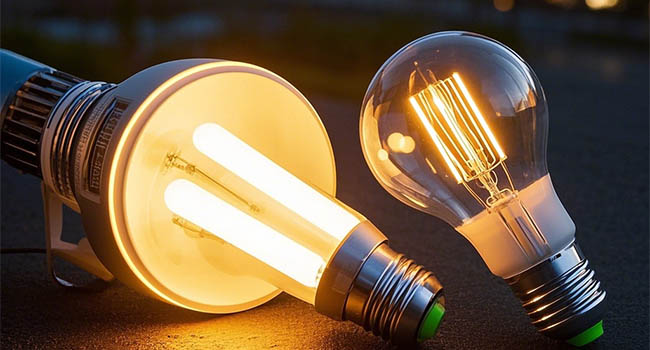
In shopping mall lighting design, the entrance and the main channel area, in order to attract the attention of customers, usually need 5000-7000 lumens of high brightness lighting; and in the clothing display area, in order to highlight the color and texture of the clothing, it will use 3000-5000 lumens and high color rendering index lamps and lanterns. In hospitals, wards require soft lighting of 2000-3000 lumens, while operating rooms require high brightness of 10,000-15,000 lumens to ensure the accuracy of surgical operations.
How many lumens is a watt?
As light bulb technology continues to evolve, bulbs are becoming more and more efficient, which makes the concept of watts gradually seem obsolete. Nowadays, the concept of “lumen per watt”,or “efficacy”, is more commonly used to understand the brightness of a light bulb. By comparing different types of light bulbs, we can clearly see the increase in energy efficiency brought about by technological advances.
|
Bulb Type |
Wattage (W) |
Lumen Output (lm) |
Lumens per Watt (lm/W) |
|
Incandescent Bulb |
60 |
800 |
Approx. 13.3 |
|
LED Bulb |
10 |
800 |
80 |
|
CFL (Compact Fluorescent Lamp) |
20 |
1600 |
80 |
It is clear from the table that LED bulbs and CFLs have a huge advantage in terms of energy efficiency. While incandescent bulbs consume 60 watts of power to achieve the same 800 lumens, LED bulbs use only 10 watts and CFLs 20 watts. This not only greatly reduces energy consumption, but also saves users money on their electricity bills. In a factory workshop, if the original use of 100 60-watt incandescent bulbs, the total power of 6,000 watts, replaced by 10-watt LED bulbs, the total power of only 1,000 watts, a year according to 300 days, 10 hours a day, incandescent bulbs consume 18,000 kilowatts of electricity, LED bulbs consume 3,000 kilowatts of electricity, a year down the cost of electricity has been reduced significantly.
Do more lumens mean brighter light?
The answer is yes. Lumens directly determine the brightness of light. The higher the lumen count, the brighter the light. Unlike wattage, lumens reflect the actual luminous performance of the bulb, not its energy consumption. In other words, high lumens do not necessarily mean that a high wattage is required. When choosing lighting fixtures, we should consider both wattage and lumen ratings. A low wattage but high lumen bulb will not only provide sufficient brightness, but also realize energy savings. The importance of lumen count is even more pronounced in large lighting scenarios such as parking lots, parks, stadiums and roads. These locations require sufficient brightness for safety and normal activities, so it is critical to accurately select lighting equipment with the right number of lumens.
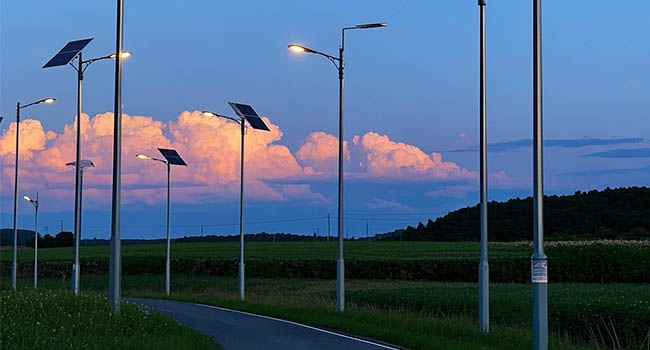
In a large open-air parking lot with an area of 5,000 square meters, in order to ensure the safety of vehicles and pedestrians, it is necessary to install 4,000-6,000 lumens of solar street lamps, with an interval of 10-15 meters, to evenly illuminate the entire area. In the park's walking path, in order to create a comfortable atmosphere, can be used 1000-2000 lumens of solar street lamps, installation spacing is appropriately increased, not only lighting but also does not damage the landscape.
How many lumens are needed for solar street lights?
The lumen demand of solar street light has a wide range, generally between 600-12000 lumens. Different lumen values are suitable for different scenes. For example, for some small community roads with a width of 3-5 meters and a short length, a 600-1000 lumen solar street light may be enough to provide basic lighting; while for urban main roads with a width of 20-30 meters and high traffic flow, a high brightness street light with 6000-12000 lumens may be needed. In some tourist attractions of the mountain path, in order not to damage the natural atmosphere, can choose 800-1500 lumens of solar street lamps, the use of imitation wood or stone appearance, and the integration of the environment.
Lumen range of different types of LED lighting equipment:
|
Lighting Fixture Type |
Lumen Range |
|
Lamp Post |
120-180 lm |
|
Motion Sensor Light |
Up to 700 lm |
|
Floodlight |
Up to 1300 lm |
|
Garden Light |
300-800 lm |
|
High Mast Light |
5000-15000 lm |
Factors affecting lumen demand for solar street lights
Street light bulb type
Different types of light bulbs, such as LED, metal halide, high pressure sodium lamps, etc., have different luminous efficiency and brightness performance. Among them, LED bulbs are the most widely used in solar street lights due to their energy efficient and high brightness features.The luminous principle of LED bulbs is to convert electrical energy directly into light energy through semiconductor chips, and the luminous efficiency can reach 80-150 lumens/watt, compared to the luminous efficiency of metal halide lamps which is about 70-100 lumens/watt, and that of high-pressure sodium lamps which is about 100-150 lumens/watt.However, LED lamps have more advantages in color rendering, life expectancy, etc., can better restore the true color of the object, and the service life of up to 50,000-100,000 hours, much higher than other traditional light bulbs.
Lighting space size
The larger the lighting space, the higher the number of lumens required. For example, a small parking lot area of 500-1000 square meters, may only need a few low-lumen solar street lamps, such as 1000-2000 lumens street lamps, the arrangement of 5-8 can be; and a large stadium, an area of tens of thousands of square meters, such as soccer stadiums, in order to meet the audience to watch the game, the players game and television broadcasting and other needs, you need to a large number of high lumens lighting equipment, may need to install 10,000-15,000 lumens. Need to install 10,000-15,000 lumens of high-pole lights dozens of, from different angles to illuminate the venue.
Distance from other light sources
If the lighting area is surrounded by other stronger light sources, then the lumen demand of solar street lights may be reduced accordingly; on the contrary, if the area is more isolated and there are no other auxiliary light sources, then higher lumen street lights are needed to meet the lighting demand. In the city center streets, the surrounding building lights, commercial advertising lights, etc., the lumen demand of solar street lights can be appropriately reduced, such as the use of 3,000-5,000 lumens can be used; while in the remote countryside roads, the surrounding environment is dark, no other light sources to assist, you need to 6,000-8,000 lumens of solar street lamps to ensure that the road is clearly visible.
Lighting duration
Lighting duration also affects lumen demand. If an area needs to be illuminated for a long period of time, in order to ensure that there is sufficient brightness throughout the lighting time period, it is necessary to choose a higher lumen street light. For example, some 24-hour business logistics park, lighting time up to 18-20 hours, in order to avoid the late night light dim, need to use 6000-10000 lumens of solar street lamps, to ensure that the cargo handling, vehicle driving and other operations are safe to carry out; and some of the night only open 4-6 hours of the internal roads of the community, you can choose 1000-3000 lumens of solar street lamps.
Number of street lights
The number of street lights is inversely proportional to the lumen demand. In the case of a certain lighting space and brightness requirements, the greater the number of street lights, the lower the number of lumens required for each streetlight. In a length of 1000 meters, the width of 8 meters of urban secondary roads, if you want to achieve an average of 50 lux (lighting brightness unit, related to lumens) lighting standards, if the installation of 20 street lamps, each street lamp lumens need to be 4,000-5,000 lumens; if you increase the number to 30 street lamps, the number of lumens per street lamp can be reduced to 3,000-4,000 lumens.
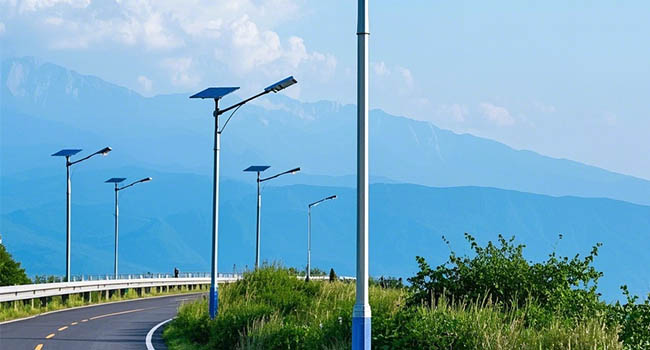
Different types of street light poles
The height and mounting angle of different types of street light poles will affect the range and uniformity of light, which in turn will affect the lumen requirement. For example, a taller pole may require a higher lumen streetlight to ensure that the light covers a larger area. A typical 8 meter high pole with 3000-5000 lumens can illuminate a circular area with a radius of 10-15 meters; if the pole is raised to 12 meters, a 5000-8000 lumen lamp may be required to achieve the same lighting effect, expanding the radius of illumination to 15-20 meters. If the installation angle of the street light pole can be reasonably adjusted according to the road direction and the surrounding environment, the lighting effect can also be optimized to a certain extent, reducing the need for high lumen street lights.
Watt and lumen are two very different but closely related concepts in the lighting field. Watts measure energy consumption, while lumens measure the brightness of light. When choosing lighting equipment, we can no longer rely solely on the number of watts to judge the brightness, the number of lumens has become a more important reference indicator. Especially in large-scale lighting projects such as solar street lights, the correct understanding and use of lumens can help us choose a lighting solution that meets both brightness requirements and energy efficiency.
Therefore, both consumers and lighting planners should make more reasonable decisions based on the number of lumens, in order to achieve the best balance between lighting effect and energy use. As technology continues to advance, lighting technology will continue to innovate, and in the future we can expect to see more efficient and smarter lighting products to further optimize the lighting experience in our living and working environments.

